A young woman wearing a modest gingham dress sits in an apple orchard reading a book. A woven basket is next to her, full of confections. She’s content beneath the trees, calmly enjoying the pastoral scene around her.
This scene depicts the ‘cottagecore’ aesthetic. Particularly popular on audiovisual social media platforms, and primarily targeted towards women, cottagecore venerates living closely with nature and idealises agricultural life. Cottageacore is meant to be simultaneously rustic and soothing, offering an escape from the chaos of our seemingly calamity-stricken modern world. However, cottagecore has also been co-opted by fascists, and may potentially serve as an aesthetic touchpoint for exposure to online extremist content. Three recent movements exemplify this dynamic online: tradwives, white nationalists and ecofascists.
This Insight serves as an initial exploration into how cottagecore is used by reactionary and extremist actors. The cottagecore aesthetic and corresponding values will first be introduced, followed by an analysis of how these aesthetics and values overlap with tradwife, white nationalist and ecofascist content.
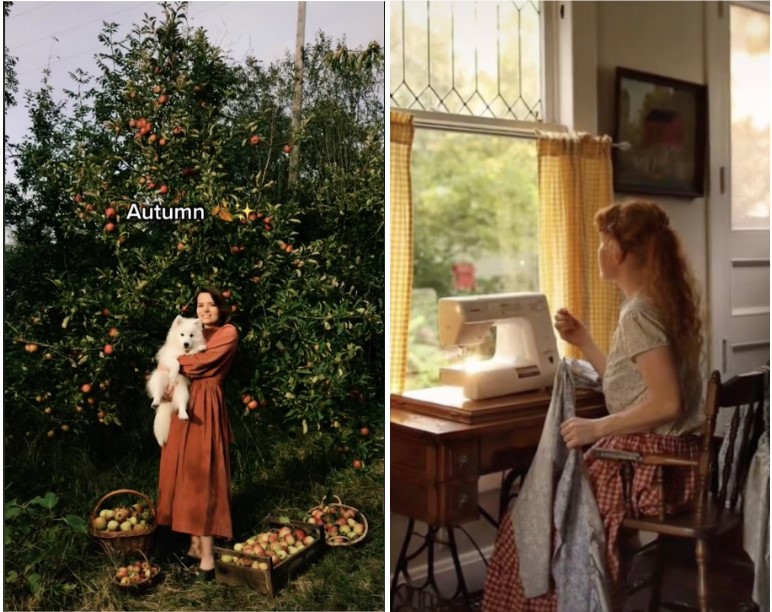
Fig. 1: Two cottagecore scenes from TikTok
Definition & Origins
First appearing on Tumblr in 2017, cottagecore was popular among the LGBTQ+ community, particularly queer women. The aesthetic then appeared on TikTok, where it propagated rapidly during the COVID-19 pandemic. Cottagecore’s rise to mainstream popularity was likely due to lockdowns. Trend experts at Tumblr reported rises in user searches for cottagecore-related content alongside rises in COVID-19 cases, hypothesising that cottagecore “helped people process things” during lockdowns. Under pandemic restrictions, people had to take solace and entertain themselves at home – two key components of a cottagecore lifestyle. Interest in baking bread at home skyrocketed, causing dry yeast to sell out in grocery stores across the US. Google searches for gardening peaked globally, in congruence with peaking COVID-19 infection rates. The ground had been sown for cottagecore’s emergence across the online ecosystem.
Although COVID-19 restrictions have largely been lifted throughout the world, the popularity of cottagecore prevails. Cottagecore fashion guides persist in both women’s fashion blogs and mainstream fashion magazines, while TikTok content using the #cottagecore hashtag has over 12.5 billion views as of February 2023.
Cottagecore content showcases women contentedly undertaking domestic and traditionally gendered labour, like cooking, cleaning, and child-rearing. As a result, the aesthetic conveys traditional values to its viewers, including the romanticisation of agricultural life and motherhood, and invokes a mythic agricultural past. Cottagecore juxtaposes itself to aspects of modern living, such as going to the grocery store for produce instead of growing your own, and assumes a moral superiority on the basis of extra work, hardship, and proximity to nature. This covert moral positioning and romanticisation of the past makes the cottagecore aesthetic reactionary, appearing to favour returning to a past status quo and modes of living, and vulnerable to exploitation by reactionary actors.
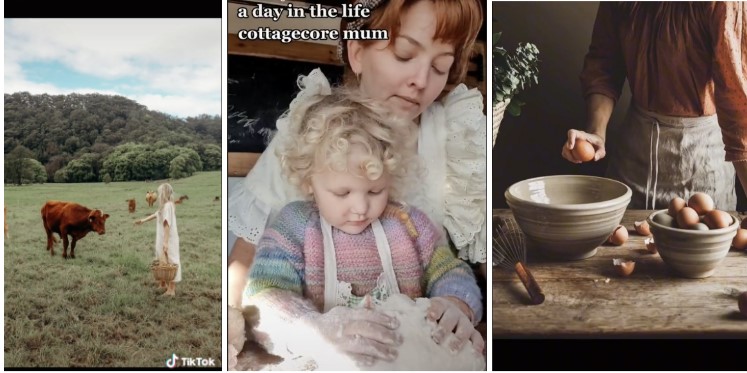
Fig. 2: Gendered labour and aesthetics in cottagecore TikToks
Cottagecore conveys that contentment, solace, and peace can be achieved by living simply and in a manner reminiscent of an idealised agrarian past. Mainstream cottagecore, however, generally overlooks the socio-political realities of this idealised past, such as misogyny, sexism, and racism. Comparatively, reactionary extremists do not ignore the inherent socio-political realities of cottagecore’s posited romanticised past. Instead, they view these past realities as positive aspects to be emulated in the present.
Both explicitly and implicitly, reactionary and extremist actors are using the cottagecore aesthetic as a vehicle to mainstream their ideologies. This article will discuss this dynamic as it exists among online tradwife, white nationalist, and ecofascist communities.
Tradwifery
Cottagecore’s heavy emphasis on gendered aesthetics and labour – observed through the imagery of women in modest dress, tending to children, and cooking – has led to its adoption by tradwives. Tradwives, or ‘traditional wives,’ are part of an anti-modern movement in which participating women are the primary caretakers in their families and do not engage in paid labour in the workforce.
The tradwife movement broadly cannot be described as inherently extremist. However, the tradwife movement may act as a conduit for involvement in extremist ideologies. Some tradwife community members espouse explicitly far-right ideologies, including aggressive xenophobia, white nationalism, and even ecofascist concepts. Researchers have referred to the movement as “the best example of alt-right views on traditional sex/gender roles,” and asserted that the movement’s “hyperfeminine aesthetic” is an attempt to “mask the authoritarianism of their ideology.” On TikTok, the tradwife aesthetic predominantly manifests as montages of 1950s households, cottagecore content and gardening photos. Despite the movement’s emphasis on anti-modern ways of life, it relies on social media to grow. As of February 2023, tradwife content on TikTok had accrued 117.3 million views.
Cottagecore and the tradwife movement both glorify and pine for a sanitised, fictional past. While cottagecore venerates rural living and agricultural life, tradwifery glorifies traditional gender dynamics in which men and women have two distinct spheres of influence, ignoring the negative ramifications of these gender roles.
The movements also share immense aesthetic overlap, as many tradwives emulate the cottagecore aesthetic through modest clothing, gardening, and cooking. Below (Fig. 3) is a typical tradwife TikTok account demonstrating the overlapping cottagecore and tradwife values of domesticity and gendered household labour, in this case making homemade tomato sauce.
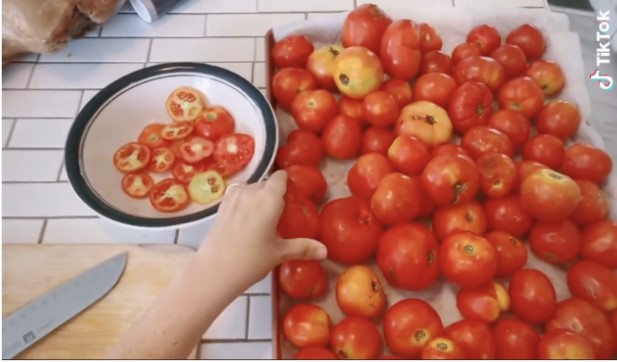
Fig. 3: Tradwife TikToks may have topical overlap with cottagecore TikToks
This TikTok’s accompanying hashtags, “#sahm [stay at home mom] #homemaker #genderroles #feminine, #tradwife, #feminity [sic] #homemaking #canning #tomatosauce” further demonstrate cottagecore and tradwife content’s topical overlap.
In some cases, the overlap between the movements appears to be deliberately created. Numerous tradwife TikToks utilise both #cottagecore and #tradwife hashtags, drawing the movements closer together and increasing the likelihood that cottagecore enthusiasts are shown tradwife content. Additionally, some TikToks posted with #cottagecore and #tradwife are also tagged with overtly extremist hashtags, demonstrating how both the cottagecore and tradwife movements may be used to funnel users to overtly extremist content.

Fig. 4: A cottagecore Tiktok posted alongside tradwife, cottagecore, and extremist hashtags
Figure 4 is a screenshot is of a TikTok that had been posted alongside the following hashtags: “#cottagecore #feminineurge #bookish #romantic #tradwife #peasantlife #housewifesoftiktok #purposefulliving #revoltagainstthemodernwrld #homemakertiktok #livebeautiful #onceuponatime #whimsy.” Notable standouts from this list include the cottagecore and tradwife hashtags and the presence of “revolt against the modern world,” a reference to fascist ideologue Julius Evola’s book and a popular refrain among reactionary extremists.
White Nationalism
White nationalists, as defined by the European Center for Populism Studies, “seek to ensure the survival of the white race, and the cultures of historically white states.” White nationalists believe in the existence and preservation of a ‘white nation,’ a belief made apparent throughout their propaganda. White Nationalists glorify the beauty of the European countryside and of white European women; encourage white people of European descent to connect with Pagan religions practised prior to the arrival of Christianity; and laud a time in which Europeans were knights, monarchs, explorers and conquerors. Similar to cottagecore and tradwifery, white nationalism is often both nostalgic and reactionary, pointing adherents to the past as inspiration for the present.
Cottagecore’s emphasis on pastoralism, particularly that of the European countryside, nostalgia for living closer to the land, and veneration of agricultural life all heavily overlap with white nationalist propaganda. White nationalists frequently invoke the natural beauty of Europe, overlaying photos of grand landscapes with nationalist iconography like Nordic runes and the Sonnenrad–icons frequently used by neofascists, white supremacists, ecofascists, and related violent extremist movements. Figure 5 is a photo from Pinterest, identified through a keyword search of ‘cottagecore.’ Figure 6 is white nationalist propaganda from a neo-Pagan and white nationalist Telegram channel.

Fig. 5: Pinterest content from “cottagecore” search query

Fig. 6: Propaganda from a white nationalist Telegram channel with cottagecore aesthetics
Both of these images convey an idyllic, pastoral lifestyle and glorify older standards of living that allowed people to live simply and alongside nature. However, the white nationalist propaganda at right has been overlaid with the term ‘heimat,’ the German word for homeland, and the Othala rune. Heimat is a contested term previously used in Nazi propaganda. German sociologist Armin Nassehi has referred to heimat as a “tactical romanticised concept,” used by members of the German far-right to invoke nostalgia for a romanticised version of Germany’s past.
Although the Othala rune has not always been solely associated with neofascist or white nationalist extremism, like the term heimat, the rune was co-opted and used in both Nazi propaganda and in SS division regalia. The inclusion of these elements transforms otherwise unremarkable cottagecore content into extremist propaganda.
Cottagecore’s emphasis on gendered dress and labour serves as an additional touch point with white nationalism. Women in both cottagecore content and white nationalist propaganda are often seen engaged in idyllic, pastoral activities and settings. However, in white nationalist propaganda, symbols and slogans are overlaid that implore the viewer to protect or save these women, presumably from men of other races. On the left of Figure 7 is a photo from Pinterest, identified through a keyword search of ‘cottagecore.’ At right is propaganda from a white nationalist Telegram channel, positing that “there is a war on whites.”
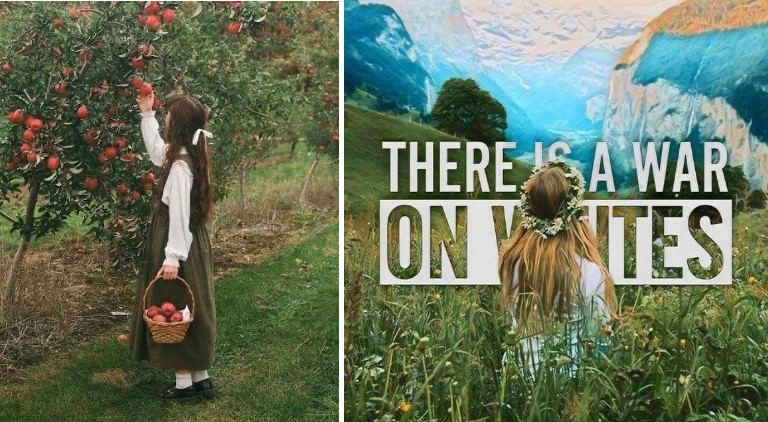
Fig. 7: (left) Pinterest content from “cottagecore” search query; (right) Propaganda from a white nationalist Telegram channel with gendered cottagecore aesthetics
Ecofascism
Ecofascism is a strain of environmentalism that promotes the use of violence to protect the environment and posits that nature favours white people. More specifically, ecofascism takes concepts from ‘blood and soil’ neofascist ideologies that argue certain races intrinsically belong to certain tracts of land–often glorifying the homelands of European peoples. This is frequently combined with aspects of deep ecology, a variant of environmentalism that argues humanity is an inherent scourge on the global environment and in extreme manifestations, the genocide of the human race is a viable option for saving the environment.
At face value, ecofascist propaganda and cottagecore content evoke similarly quaint pastoralism and emphasise living more closely with nature. Both cottagecore and ecofascist content place heavy emphasis on the value of being in nature as demonstrated in the below ecofascist propaganda (Fig. 8) accompanied by the text, “nature is not a place to visit – it is home.”
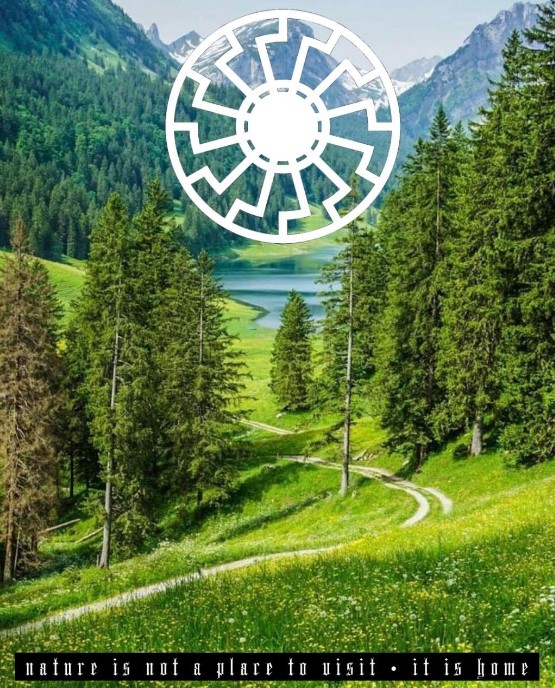
Fig. 8: Propaganda from an ecofascist Telegram channel demonstrating similarities with cottagecore
Similar to white nationalist propaganda, ecofascist propaganda often overlays otherwise innocuous photos with fascist signifiers, such as the Sonnenrad, as demonstrated in Figure 12. This allows ecofascist and other extremist movements to easily create propaganda and to co-opt popular aesthetics. In Figure 8, the European countryside aligns with ecofascist values–the veneration of nature–while conveniently overlapping with values put forth by cottagecore.
Ecofascist propaganda and cottagecore content both also frequently highlight the importance of growing and producing food. Gardening, canning, and other food production activities demonstrate the anti-modern and reactionary aspects of both ecofascism and cottagecore, while also illustrating how these movements attempt to assume moral superiority on the basis of their detachment from modernity. However, cottagecore’s desired detachment from modernity is out of a longing to escape the anxieties, loneliness, and discontent deemed part of modern life. Comparatively, ecofascists believe that detaching from modern life allows them to escape racially diverse, ‘degenerate’ societies that, in their minds, want to erase whiteness and destroy the environment.
Thus, ecofascist content and propaganda often invoke the idea of leaving the modern world and ‘returning to nature,’ a similarly nostalgic and reactionary sentiment to cottagecore’s romanticisation of rural living. Below (Fig. 9) is an example of content from an ecofascist Telegram channel that contains this imploration to return to nature, accompanied by a literal picture of a cottage.
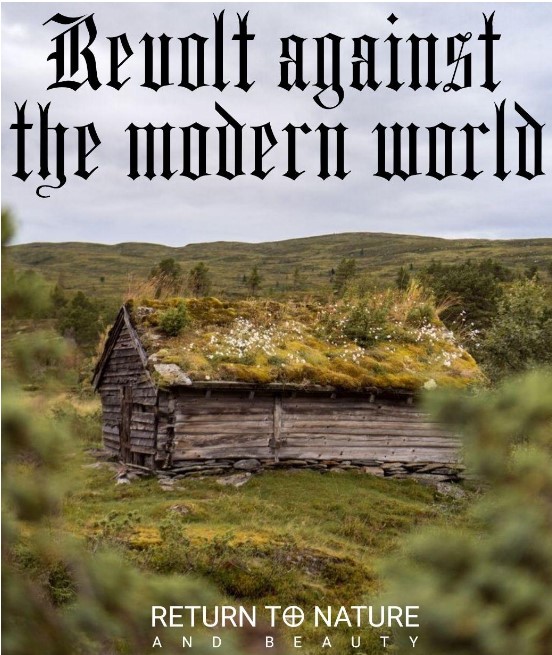
Fig. 9: Propaganda from an ecofascist Telegram channel demonstrating similar emphasis on ‘returning to nature’ as cottagecore
Similar to the aforementioned tradwife TikTok (Fig. 3), Figure 9 also contains an overt reference to Evola’s Revolt Against the Modern World. Thus, ecofascist pastoralism and cottagecore evoke nostalgia for a romanticised past, while promoting a future in which people can once again live more closely to nature. However, for ecofascism, this future can only be achieved through violence, or revolting against the modern world.
Conclusion
This Insight serves as an introduction to the use of the cottagecore aesthetic among reactionary and extremist actors. Importantly, involvement in the cottagecore aesthetic and community in no way begets involvement in extremist circles. However, aesthetic overlaps in combination with deliberate actions taken by extremists demonstrate that otherwise harmless popular content can serve as possible touchpoints for engagement with extremist content and ideologies. For example, while not overtly extremist, tradwife content has the potential to push users towards increasingly reactionary and extremist spaces, exposing them to increasingly reactionary and extremist content. Researchers must view cottagecore’s overlapping values with anti-modern movements as possible stepping stones to radicalisation, while still exercising caution in conflating cottagecore with extremism or anti-modern movements. Similarly, tech companies should consider how on-platform content that is not explicitly violative may still contribute to possible radicalisation processes and how contextually-heavy content, such as cottagecore content, may slip through the cracks of content moderation efforts.
Robin O’Luanaigh is a Research Lead for the Center on Terrorism, Extremism, and Counterterrorism (CTEC). Her research interests include the intersection between disinformation, conspiracy theories, and extremism, the proliferation of extremist content on newer social media platforms, particularly platforms frequented by younger users, and ways in which reactionary and extremist actors and ideologies become mainstream. She holds a Master’s in Security Studies from Georgetown University and attended undergrad at the University of North Carolina-Chapel Hill.
